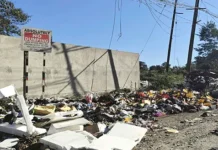Monday Musing
[ Karyir Riba ]
Development comes at a price. And when it is human life that is at stake, it is a hefty price we have to pay in exchange of development.
Lets talk dams.
If one has to speak from a layman’s perspective – no technicalities involved – we have witnessed many a time how disastrous dam breaches can be. Such occurrence not only causes harm to human life and property but also to the overall ecosystem and biodiversity around, which might take years and years to be replenished.
If we take a look at the recent havoc created by one such dam breach in Himachal Pradesh, we can only estimate as to how much grief and anguish were caused to the natives there.
On the 1st of August, the Malana dam collapsed, causing huge loss of life and property in several villages located downstream of Malana. According to the latest reports, the death toll has reached 22 and rescue operations are still going on to find over 30 missing people. Over 100 roads have been closed, adding to the inconvenience for the people of the region.
The Malana-I hydroelectric plant is an 86MW run-of-the-river hydroelectric power plant in Kullu, Himachal Pradesh. It has been generating power since 2001.
Reportedly, water was overflowing for 10-15 days prior to the disaster, and eventually a ‘cloudburst’ led to the collapse of the dam, causing devastation in the valley.
Another unmissable disaster caused due to a collapsing dam, most undoubtedly, has to be the Chungthang dam tragedy that took place in October 2023.
The Chungthang dam of the Sikkim Urja Limited’s 1,200MW Teesta-III hydroelectric project on the Teesta River gave way on 4 October, contributing to the death of at least 94 people in the downstream areas of Sikkim and West Bengal, and causing significant damage to public property and infrastructure. The run-of-the-river dam was destroyed along with several highways, villages, and towns in Sikkim. The cause of the disaster was said to be a glacier lake outburst.
Are these to be termed natural disasters, or are they manmade disasters?
With two such disastrous events occurring within a span of less than a year, should we feel at risk with so many dams coming up in our state?
The twin Dibang Valley districts alone have at least two mega dams coming up, construction of one of which has already commenced. These dams are being constructed with ambitions of generating greater units of hydropower compared to the above mentioned ones. So, should we brace ourselves for even bigger disasters?
The 2,880MW Dibang Multipurpose Hydroelectric Project, construction of which is ongoing, is set to be the highest dam in India at 278 metres high. It will produce 11,223 million units of hydropower every year. As per information, on the completion of the project, the Government of Arunachal will receive 12 per cent free power from the Dibang hydroelectric facility, while another 1 per cent of free power will be contributed to the state through the Members of Parliament Local Area Development Funds. The remaining energy will be sold to other northeastern and eastern states of India.
Then there is the 3,097MW Etalin Hydroelectric Project, which is also a run-of-the-river project, the construction of which is most likely to commence in 2027. The project is expected to generate 12,752GWh of electricity.
God only knows what level of destruction the downstream areas will have to endure in case these dams were to collapse.
We do get it that there are advantages of hydroelectric/hydropower dams. First of all, hydropower is a renewable source of energy. Unlike the traditional fossil fuel sources of energy, using hydropower to produce electricity does not release any pollutants in the air or dirty water. It can be locally/domestically generated, cutting our dependence on other fuel sources. Moreover, it provides low-cost electricity and durability over time, compared to other sources of energy.
Hydroelectric dams/plants are also supposed to help in flood control. Contradictorily, we have so far witnessed disastrous flash floods caused by them.
Monsoons can be extremely unforgiving in the Dibang Valley districts, just as in the rest of the state. This fact leaves us to ponder if these dams will be a boon or a bane for us.
The state government needs to ensure dam safety, right from the construction process to when it’s operational. They need to be at par with the regulations of the Dam Safety Act, 2021.
The Dam Safety Act was introduced in December 2021 in response to the longstanding issues of inadequate surveillance and maintenance that have led to dam failure-related disasters. It establishes responsibilities at both the national and state levels to ensure the safety of dams to address these concerns.
The key provisions include the creation of the National Committee on Dam Safety (NCDS) and the National Dam Safety Authority (NDSA) at the national level. States are required to establish state committees on dam safety and state dam safety organisations. States are responsible for classifying dams based on hazard risk, conducting regular inspections, developing and maintaining emergency action plans, implementing flood warning systems, conducting safety reviews, and reporting dam-related incidents.


